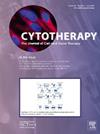Do Maternal and Fetal Demographics Affect the Quality of Umbilical Cord-Derived MSCs? Insights from a Colombian Cohort
IF 3.7
3区 医学
Q2 BIOTECHNOLOGY & APPLIED MICROBIOLOGY
引用次数: 0
Abstract
Background & Aim
Wharton's Jelly-derived mesenchymal stem cells (WJ-MSCs) have demonstrated regenerative and immunomodulatory properties. However, the influence of maternal and fetal demographics on WJ-MSC quality remains underexplored. Identifying correlations between maternal age, gestational parameters, and fetal characteristics could establish benchmarks for optimizing WJ-MSC isolation and application in clinical contexts. This study investigated correlations between demographic factors and WJ-MSC quality attributes.
Methodology
A retrospective analysis was conducted on WJ-MSCs isolated and characterized per ISCT guidelines. Umbilical cords (UCs) were collected from donors who provided informed consent for biobanking between April 2023 and April 2024. From 28 UCs yielding 48 cell lots, at least one line per cord was randomly analyzed. Data included maternal age, gestational age, parity, and neonatal metrics (weight, length). Infectious disease screenings were conducted on donor medical records and cord blood samples. WJ-MSCs were cultured under normoxic or hypoxic conditions, with quality assessments (P2–P4) including karyotype analysis, flow cytometry for ISCT markers (CD73, CD90, CD105, CD44), viability assays, differentiation potential (adipogenic, chondrogenic, osteogenic), and morphological evaluation. Correlations between demographics and MSC quality attributes were statistically analyzed using Jamovi 2.3.28.
Results
Of 28 UCs collected, 4 were excluded (2 due to infectious disease panel abnormalities, 2 due to contamination). Exclusions showed no correlation with membrane rupture times or other parameters. Mean maternal age was 25.1 years, with median gestational age of 39.1 weeks. All WJ-MSC lines met ISCT's criteria for MSC identity and sterility. Preliminary findings suggested a correlation between time from membrane rupture to delivery and expression levels of CD90, CD105, and CD73. A statistically significant difference in CD73 and CD90 expression variance was observed between male and female neonates, with smaller intervals in females. No significant correlation was identified between proliferation and demographic factors.
Conclusion
Preliminary data indicate that maternal and fetal demographics, particularly time from membrane rupture to delivery, influence specific marker expressions in WJ-MSCs. Markers also exhibit sex-specific differences. Further studies with larger samples and functionality testing are needed to validate findings and establish population-specific WJ-MSC standards.
产妇和胎儿的人口统计学特征会影响脐带来源的间充质干细胞的质量吗?来自哥伦比亚队列的见解
背景,AimWharton的果冻源间充质干细胞(WJ-MSCs)已经显示出再生和免疫调节特性。然而,孕产妇和胎儿人口统计学对WJ-MSC质量的影响仍未得到充分研究。确定母亲年龄、妊娠参数和胎儿特征之间的相关性可以为优化WJ-MSC分离和临床应用建立基准。本研究探讨人口统计学因素与WJ-MSC质量属性的相关性。方法回顾性分析根据ISCT指南分离并鉴定的WJ-MSCs。从2023年4月至2024年4月期间为生物库提供知情同意的捐赠者处收集脐带(UCs)。从28个UCs产生48个细胞批次中,每个脐带至少有一个细胞系被随机分析。数据包括产妇年龄、胎龄、胎次和新生儿指标(体重、身长)。对捐赠者的医疗记录和脐带血样本进行了传染病筛查。WJ-MSCs在常氧或缺氧条件下培养,进行质量评估(P2-P4),包括核型分析、流式细胞术检测ISCT标记物(CD73、CD90、CD105、CD44)、活力测定、分化潜力(成脂、成软骨、成骨)和形态学评估。采用Jamovi 2.3.28对人口统计学与MSC质量属性的相关性进行统计分析。结果在收集到的28例UCs中,4例被排除(2例因传染病面板异常,2例因污染)。排除与膜破裂时间或其他参数无关。产妇平均年龄为25.1岁,中位胎龄为39.1周。所有WJ-MSC系均符合ISCT的MSC鉴定和不育标准。初步结果表明,从膜破裂到分娩的时间与CD90、CD105和CD73的表达水平有关。新生儿CD73和CD90表达差异有统计学意义,女性差异较小。未发现增殖与人口因素有显著相关性。结论初步数据表明,母体和胎儿的人口特征,特别是从膜破裂到分娩的时间,会影响WJ-MSCs中特异性标志物的表达。标记也表现出性别特异性差异。需要更大样本的进一步研究和功能测试来验证研究结果并建立特定人群的WJ-MSC标准。
本文章由计算机程序翻译,如有差异,请以英文原文为准。
求助全文
约1分钟内获得全文
求助全文
来源期刊

Cytotherapy
医学-生物工程与应用微生物
CiteScore
6.30
自引率
4.40%
发文量
683
审稿时长
49 days
期刊介绍:
The journal brings readers the latest developments in the fast moving field of cellular therapy in man. This includes cell therapy for cancer, immune disorders, inherited diseases, tissue repair and regenerative medicine. The journal covers the science, translational development and treatment with variety of cell types including hematopoietic stem cells, immune cells (dendritic cells, NK, cells, T cells, antigen presenting cells) mesenchymal stromal cells, adipose cells, nerve, muscle, vascular and endothelial cells, and induced pluripotential stem cells. We also welcome manuscripts on subcellular derivatives such as exosomes. A specific focus is on translational research that brings cell therapy to the clinic. Cytotherapy publishes original papers, reviews, position papers editorials, commentaries and letters to the editor. We welcome "Protocols in Cytotherapy" bringing standard operating procedure for production specific cell types for clinical use within the reach of the readership.
 求助内容:
求助内容: 应助结果提醒方式:
应助结果提醒方式:


